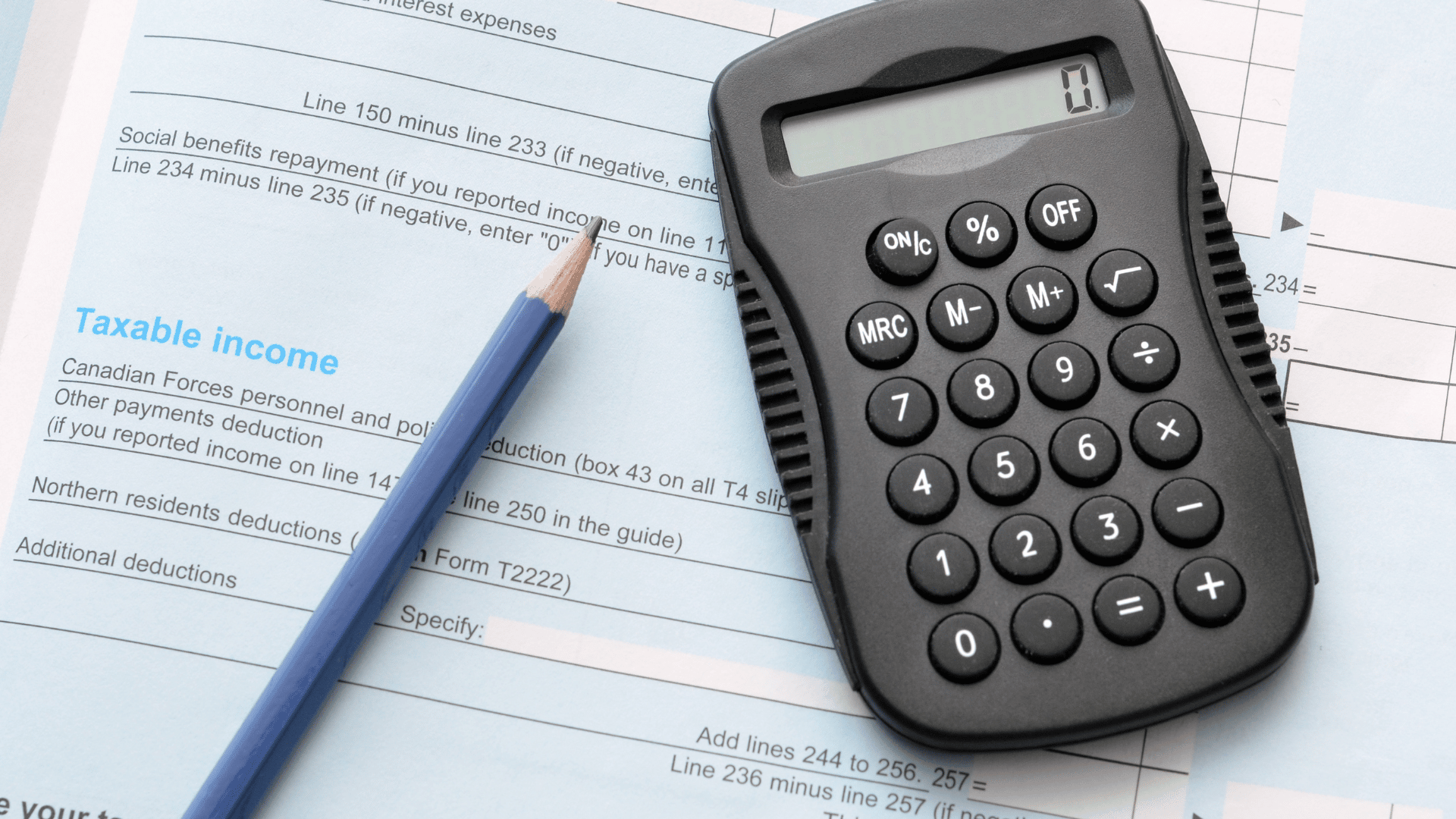Making personal income tax instalments sounds simple on the surface – just pay CRA once a quarter. But when the payment due dates arise, the questions start. You might wonder whether you really need to bother or how much each payment should be. Here are the most frequently asked questions regarding personal income tax instalments. Knowing your obligations could save you hundreds or even thousands of dollars in interest and penalties.
Do I need to pay tax instalments?
You need to pay instalments in 2022 if:
- Your net tax owing for 2022 is $3,000 or more ($1,800 or more if you are a resident of Quebec) AND
- Your net tax owing in 2021 or 2020 is also $3,000 or more ($1,800 or more for residents of Quebec)
The same concept applies to whether you need to pay instalments in future years.
Why do I need to pay tax instalments?
The instalment system exists for two reasons. First, money now is better than money later. When given the option of receiving $100 now or $100 in one year, most of us would choose to receive the $100 now so that we can either spend the money or invest it. Canada Revenue Agency is no different – getting their money earlier is preferable to getting it later.
Second, the instalment system adds an element of fairness to the timing of payments. Individuals who earn employment income pay their tax immediately as the tax is deducted at the source. Individuals who are self-employed or have rental or investment income do not usually have any tax deducted from those payments. If instalments did not exist, those individuals could invest the money they owe in taxes and generate up to a year’s worth of interest before being required to pay, thereby creating an advantage. Paying instalments reduces that advantage.
When are the tax instalment payment due dates?
Quarterly instalment payments for 2022 are due: on March 15, June 15, September 15, and December 15. If you owe more tax than your required instalments, that balance is due on April 30, 2023. If any of these dates fall on a weekend or holiday, the payment is due on the next business day.
How are the amounts on CRA’s instalment notices determined?
In February, you should receive a notice with the payment amounts that CRA has calculated for March 15 and June 15. These payment amounts are based on the second preceding tax year. So, for 2022, these first two notice amounts are calculated by taking your 2020 taxes payable and dividing them by 4. For example, if your total payable for 2020 (not counting any instalment payments you made for that year) was $10,000, the payments requested by CRA for March and June of 2022 would be $2,500 each (10,000/4).
In August, you should receive a notice indicating the September 15 and December 15 payment amounts. These two instalments are based on the first preceding tax year. So, for 2022, these last two notices of the year are calculated by taking your 2021 taxes payable (again, excluding any instalment payments made for that year), subtracting the total requested for March & June, and then dividing the result by 2. For example, if your tax payable for 2020 was $10,000 and your tax payable for 2021 was $20,000, here is how this calculation would work:
- March 15, 2022 instalment notice payment amount = 2020 taxes of $10,000/4 = $2,500
- June 15, 2022 instalment notice payment amount = same as March = $2,500
- September 15, 2022 instalment notice payment amount = [2021 taxes of $20,000 less total amount requested on March 15 & June 15 notices combined of $5,000] / 2 = $15,000/2 = $7,500
- December 15, 2022 instalment notice payment amount = same as September = $7,500
Important – September 15 and December 15 payment notices are not adjusted for current year payments made. If you paid more or less than the notice asked you to pay for March and/or June, your September and December notices will still ask you for the amount as calculated above.
Can I pay a different amount than what has been requested?
Yes, you can pay a different amount. There are 3 options available for calculating your instalments.
Option 1 – No calculation (the CRA notice amounts described above)
This option works well if your income tax balance owing is likely to be the same or higher in 2022 than it was in 2021 and 2020. With this option, you pay what CRA tells you on their instalment notices and remit the balance on April 30, 2023, after you have filed your taxes. You don’t have to do any calculations and you won’t be charged instalment interest or penalties with this option. The problem with this option occurs when your income is going down, especially if that decline is significant. You can imagine how difficult it would be to remit instalments based on a prior year’s income of $100,000 if your current income is only $50,000.
Option 2 – Prior-year calculation
This option works well if your current year’s tax balance is similar to last year but less than the year before. With this option, you take your previous year’s tax balance owing (without factoring in any instalment payments made) and divide it by 4. For example, if your 2021 balance was $20,000, each of your 2022 payments would be 20,000/4 = $5,000. The tricky part of this option is that since the numbers are based on last year, in order to know how much to pay for your first instalment, you need to have your previous year’s taxes done before the March 15 instalment payment deadline. Your McCay Duff advisor can give you an estimate for your first payment if you are still waiting on investment slips or other information for your return.
Option 3 – Current year option
This option might work best if your income has declined, or you have more tax being withheld at source than in prior years. Your McCay Duff advisor can help you calculate what you are likely to owe for the current year and you can make instalment payments based on these numbers. The benefit of this approach is lower payments. The risk is that you might be charged interest if your income estimates are too low. If something changes during the year and your tax balance end up higher than you thought it would be, CRA will charge you interest and possibly penalties on your instalment payments. More details on that are below.
What happens if I do not pay tax instalments?
If you do not pay instalments when you were required to, you will be charged interest and possibly a penalty. See calculation details below.
What happens if I pay a different amount and have a balance of tax payable?
If you use Option 1 or Option 2 to calculate your 2022 instalment payments as described above and you pay any remaining balance owing by April 30, 2023, CRA should not charge you interest or penalties on your instalments. If you use Option 3 (Current-year option) and you have a balance owing, you will be charged interest and possibly penalties.
How are tax instalment interest and penalties calculated?
CRA will first determine the instalment payments that should have been made under all 3 options above. They will charge interest and penalties using the calculation that results in the lowest payment and therefore the lowest interest/penalty.
Interest
Interest is calculated based on CRA’s prescribed rate, which changes every 3 months. The current prescribed rate (for the last quarter of 2022) is 7% for overdue instalments. The rates for the first 3 quarters of this year were 5%, 5%, and 6% respectively. So, if you missed your March 15, 2022 instalment payment entirely, you would be charged 5% interest from March 15-June 30, 6% interest from July-October, 7% from October-December and whatever the 2023 rates are for Jan-April 2023. As of May 1, 2023, interest will be charged on your unpaid tax balance owing for 2022.
If you paid less than any required instalment, interest would be charged on the difference. For example, if the lowest instalment payment calculated under options 1, 2, and 3 above was $2,500 for March 15, 2022 and you paid $1,500 on that date, you would be charged interest on $1,000.
Depending on changes to the prescribed interest rate, you can reduce or possibly eliminate this interest charge by making future instalment payments early. So, if you realize on June 10th that you haven’t made your March 15th instalment payment, you could pay March, June, and September all together before June 15th to reduce the interest that you would otherwise be charged on your March 15th payment.
If you realize in January that you should have made instalments for the previous year, you can make a lump sum payment to reduce future interest charges.
Penalties
If your instalment interest is $1,000 or more, then CRA may also add a penalty. This penalty is calculated as 50% of [the interest payable on instalment shortfalls less $1,000 or 25% of the interest you would have had to pay if you made no instalment payments during the year, whichever is greater].
For example, if you paid no instalments at all for the year and the interest charges amount to $1,500, the instalment penalty would be calculated as follows:
Penalty = 50% of: Interest charges – (greater of: 1,000 or 25% of instalment interest calculated if no payments had been made at all)
= 50% [1,500 – greater of 1,000 or 1,500 x25%]
= 50% [1,500-1,000]
= $250
Contact McCay Duff LLP in Ottawa for Advice and Assistance with Personal Income Tax Instalments
Paying tax instalments can feel onerous, but not paying them when they are required can be much worse. If you aren’t sure whether you need to pay instalments, or if you need help determining what the amounts should be, please contact the tax professionals at McCay Duff LLP in Ottawa for assistance. Our tax advisors provide expertise in all aspects of corporate tax, Canadian and U.S. personal tax, and ensure compliance with tax laws while minimizing your tax obligations. To learn more about how McCay Duff LLP can assist you or your business, please contact us online, or by telephone at 613-236-2367, or toll-free at 1-800-267-6551.





